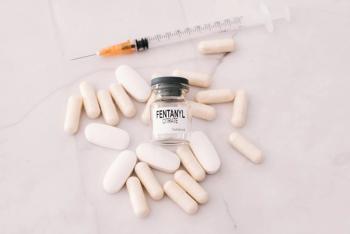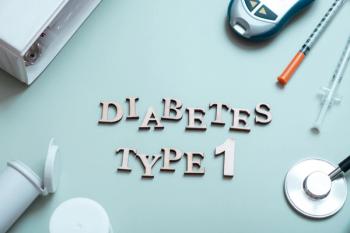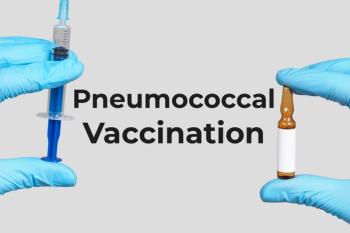
Cultural, Health System Barriers Impact HPV Vaccination Rates
Researchers aimed to identify the barriers impeding HPV vaccine uptake since 2019 among US mid-adults aged 27 to 45.
Focusing on the US mid-adult population of unvaccinated individuals 27 to 45 years old, study participants highlighted various barriers to human papillomavirus (HPV) vaccine uptake, including low vaccine awareness, lack of motivation, hesitancy, perceived unaffordability, and accessibility issues, according to data published in Human Vaccines & Immunotherapeutics.1
“In 2018, an estimated 42.5 million people in the US were living with 1 or more types of [HPV], a common pathogen and sexually transmitted infection,” wrote authors of the study. “Many individuals are unaware they have HPV because it is not a nationally notifiable condition, and most cases resolve without symptoms. However, certain HPV types can cause anogenital and oropharyngeal cancers—diagnosed in approximately 37,800 people in the US each year—as well as warts.”
Based on US Advisory Committee on Immunization Practices (ACIP) standards, an HPV vaccination series is typically recommended for girls 11 to 12 as well as boys, with catch-up vaccination recommended for individuals up to age 26. However, the 18-26 age group continues to fall behind in vaccination rates with less than half of the entire population reporting HPV vaccines.
Despite this age group showing a decline in vaccination rates in 2022, it was prior to that when the FDA expanded its approval for the age groups eligible for HPV vaccination. In 2018, the 9-valent HPV vaccine was expanded to what are defined as mid-adults aged 27 to 45.
READ MORE:
“Following this approval in 2019, ACIP recommended ‘shared clinical decision-making’ (SCDM) for mid-adults aged 27-45 ‘who are not adequately vaccinated’ and ‘might be at risk for new HPV infection and might benefit from vaccination.’ However, the recommendation lacks guidance on how to identify these individuals,” continued the authors.1
Study researchers conducted a series of virtual focus groups with a variety of US mid-adults unvaccinated against HPV from September 2020 to January 2021. The 14 focus groups included in the study featured a total of 86 participants (34 men and 52 women) and were gender-stratified with 6 consisting of all men and the other 8 of all women.
After conducting each focus group and collecting all necessary data, researchers were confident in identifying a total of 10 perceived barriers and 5 facilitators regarding HPV vaccination and its uptake.
The identified barriers cited in the study were: lack of awareness, vaccine hesitancy, perceived unaffordability, lack of health care provider communication, insufficient time, fear of moral judgement, lack of motivation, information needs, foregone care during the COVID-19 pandemic, and lack of reliable transportation. Among these 10 barriers, study authors were sure to highlight how low awareness, vaccine hesitancy, and lack of motivation were especially common across focus groups.
According to the researchers, study participants said things like “I feel like a lot of those who could benefit [from HPV vaccination] have no idea” and “I feel like it’s too soon [to get the HPV vaccine] and data doesn’t exist yet.” While aiming to identify what is impeding HPV immunization and how to navigate that, researchers then presented their 5 facilitators to combating HPV vaccination barriers.
The 5 facilitators included tailored information, cost mitigation, enhanced accessibility, provider-initiated conversations, and reminders about eligibility.
Starting with tailored information, researchers also discovered a 2020 survey that highlighted how a majority of mid-adults need a more personalized approach to vaccine education in order for them to make informed decisions. It can be argued that education is crucial for patients looking for the confidence to make informed health decisions. However, study researchers further identified cultural and systematic barriers that cannot be impacted by the will of patients.
Underserved populations experience cultural barriers as they manage a lack of resources and overall efforts from their health systems while more underserved and uninsured populations face complications with costs of insurance and medications, leading researchers to suggest pharmacists as a reprieve to declining HPV rates.
“Given that pharmacists are trusted health care professionals authorized to administer HPV vaccines in most states, and that pharmacies were noted as a preferred location for vaccine access in our study, equipping pharmacists with decision-making tools could enhance SCDM opportunities for mid-adults with inconsistent primary care,” wrote the authors.1
Similar to a recent HPV immunization study across Texas,2 researchers agree that populations with low HPV vaccine uptake should be the main focus of efforts in the future. They believe the underserved populations are crucial for increasing uptake and education in order to decrease risk of HPV-related cancers.
“Our findings highlight how both cultural and health system barriers can hinder SCDM between mid-adults and their health care providers, alongside challenges like low awareness, lack of motivation, vaccine hesitancy, perceived unaffordability, and access issues. The study’s major contribution is its identification of actionable strategies—such as tailored educational interventions, equipping pharmacists with decision-making tools, and integrating HPV vaccination into other health care encounters—that may help facilitate SCDM and HPV vaccination in areas with limited primary care resources,” they concluded.1
READ MORE:
Ready to impress your pharmacy colleagues with the latest drug information, industry trends, and patient care tips? Sign up today for our
References
1. Krishna S, Polonijo AN. Perceived barriers and facilitators to HPV vaccination: Insights from focus groups with unvaccinated mid-adults in a U.S. medically underserved area. Hum Vaccin Immunother. 2024 Dec 31;20(1):2422681. doi: 10.1080/21645515.2024.2422681.
2. Adekanmbi V, Sokale I, Guo F, et al. Human papillomavirus vaccination and human papillomavirus–related cancer rates. JAMA Netw Open. 2024;7(9):e2431807. doi:10.1001/jamanetworkopen.2024.31807
Newsletter
Pharmacy practice is always changing. Stay ahead of the curve with the Drug Topics newsletter and get the latest drug information, industry trends, and patient care tips.





















































































































































